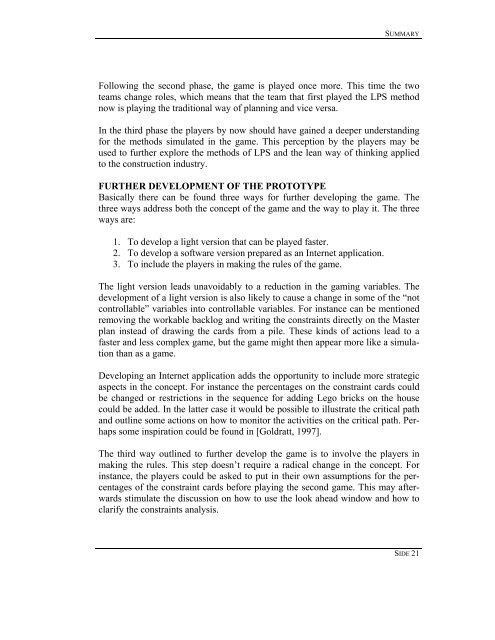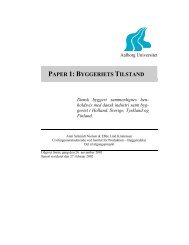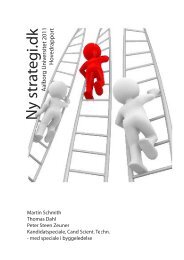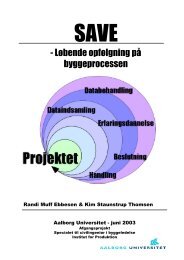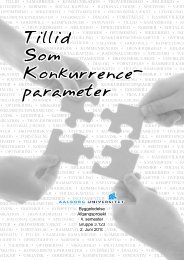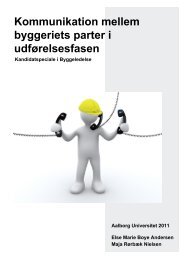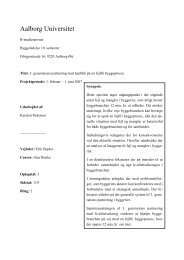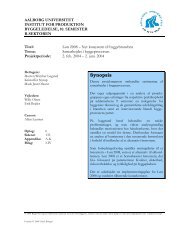Institut for produktion Civilingeniøruddannelsen i Byggeledelse
Institut for produktion Civilingeniøruddannelsen i Byggeledelse
Institut for produktion Civilingeniøruddannelsen i Byggeledelse
You also want an ePaper? Increase the reach of your titles
YUMPU automatically turns print PDFs into web optimized ePapers that Google loves.
SUMMARY<br />
Following the second phase, the game is played once more. This time the two<br />
teams change roles, which means that the team that first played the LPS method<br />
now is playing the traditional way of planning and vice versa.<br />
In the third phase the players by now should have gained a deeper understanding<br />
<strong>for</strong> the methods simulated in the game. This perception by the players may be<br />
used to further explore the methods of LPS and the lean way of thinking applied<br />
to the construction industry.<br />
FURTHER DEVELOPMENT OF THE PROTOTYPE<br />
Basically there can be found three ways <strong>for</strong> further developing the game. The<br />
three ways address both the concept of the game and the way to play it. The three<br />
ways are:<br />
1. To develop a light version that can be played faster.<br />
2. To develop a software version prepared as an Internet application.<br />
3. To include the players in making the rules of the game.<br />
The light version leads unavoidably to a reduction in the gaming variables. The<br />
development of a light version is also likely to cause a change in some of the “not<br />
controllable” variables into controllable variables. For instance can be mentioned<br />
removing the workable backlog and writing the constraints directly on the Master<br />
plan instead of drawing the cards from a pile. These kinds of actions lead to a<br />
faster and less complex game, but the game might then appear more like a simulation<br />
than as a game.<br />
Developing an Internet application adds the opportunity to include more strategic<br />
aspects in the concept. For instance the percentages on the constraint cards could<br />
be changed or restrictions in the sequence <strong>for</strong> adding Lego bricks on the house<br />
could be added. In the latter case it would be possible to illustrate the critical path<br />
and outline some actions on how to monitor the activities on the critical path. Perhaps<br />
some inspiration could be found in [Goldratt, 1997].<br />
The third way outlined to further develop the game is to involve the players in<br />
making the rules. This step doesn’t require a radical change in the concept. For<br />
instance, the players could be asked to put in their own assumptions <strong>for</strong> the percentages<br />
of the constraint cards be<strong>for</strong>e playing the second game. This may afterwards<br />
stimulate the discussion on how to use the look ahead window and how to<br />
clarify the constraints analysis.<br />
SIDE 21


